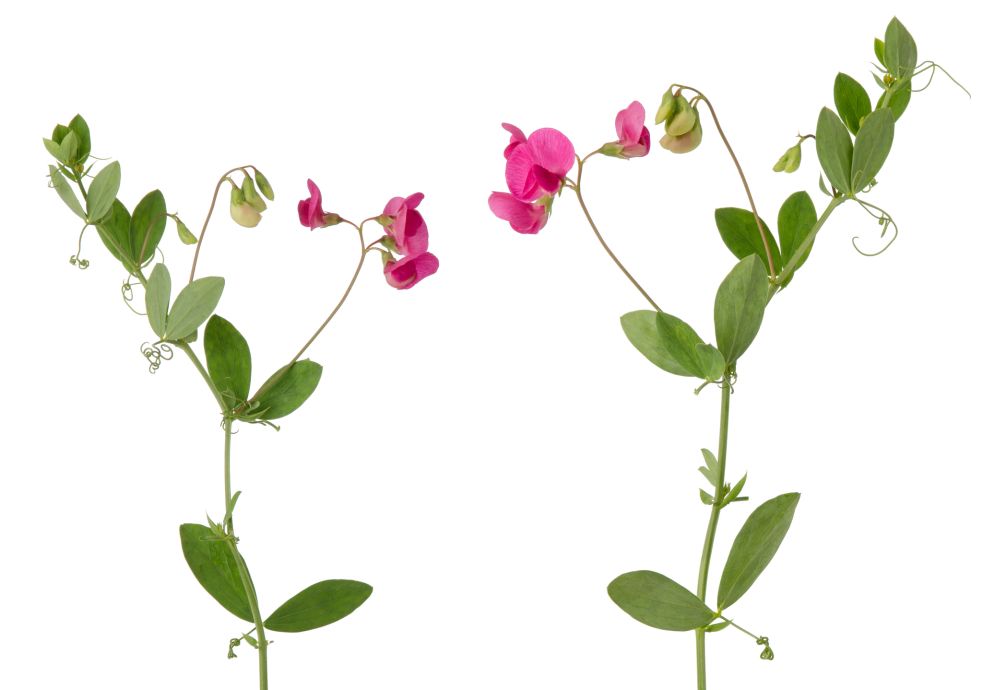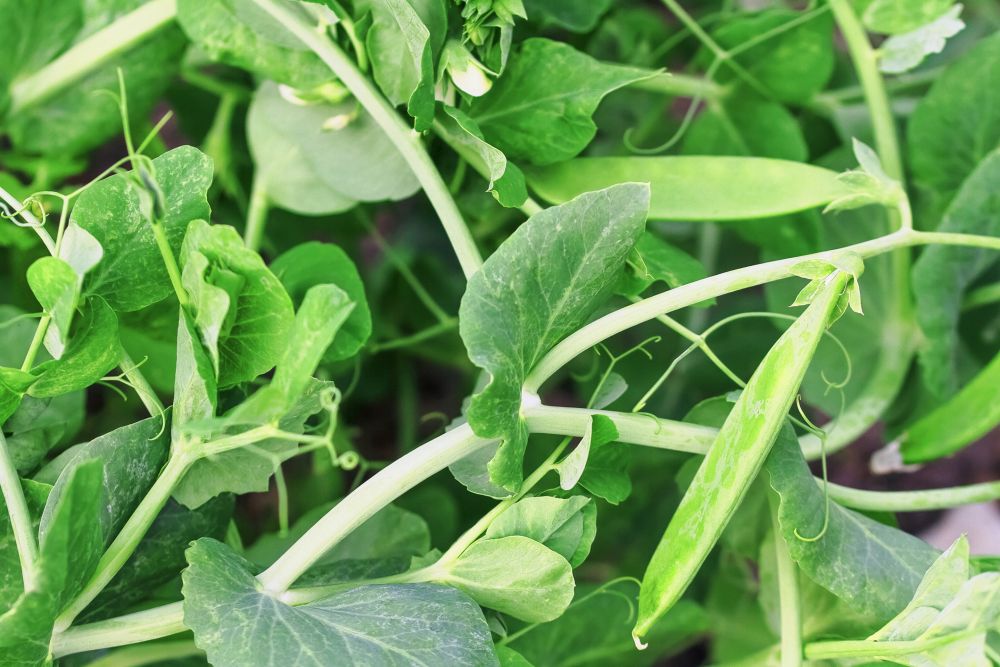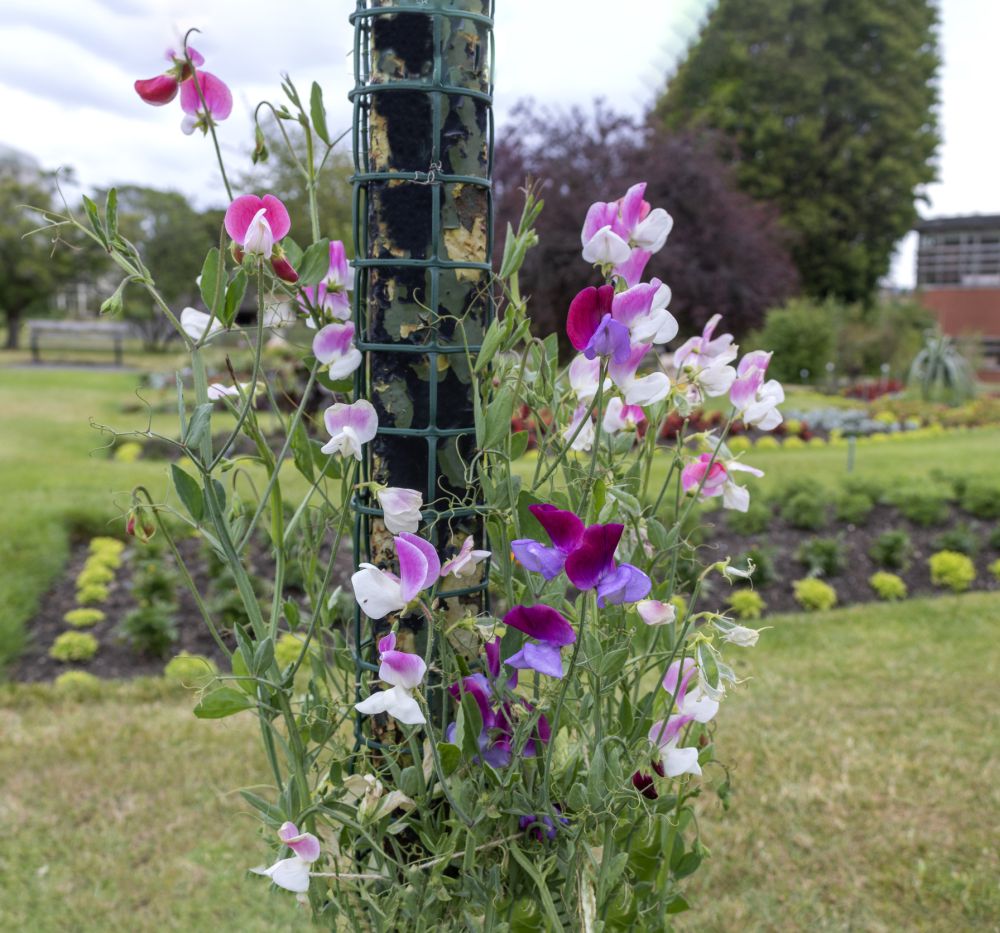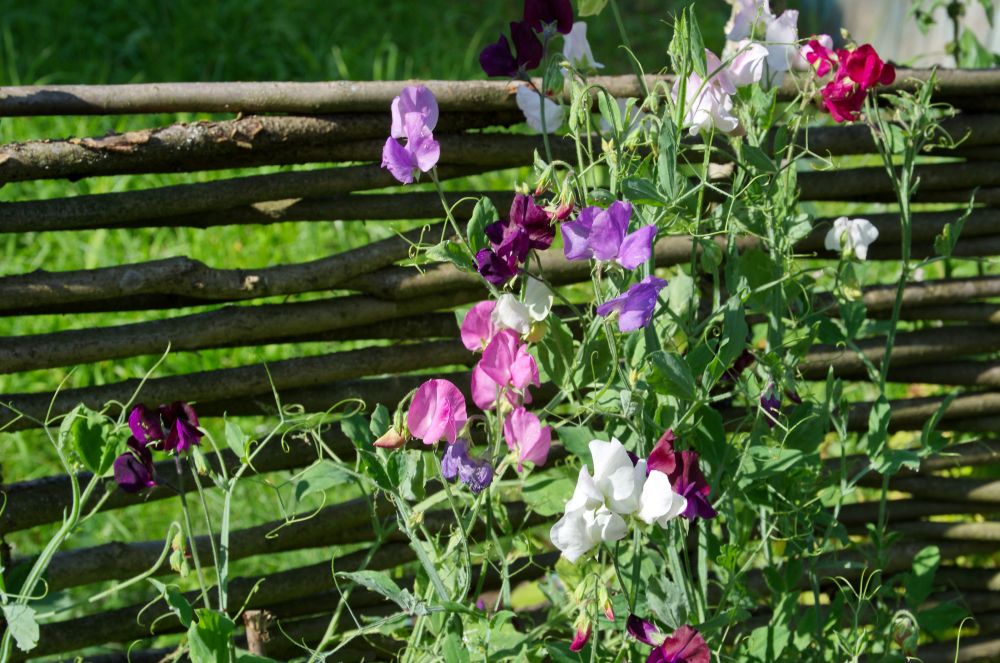Sweet Peas Growing Problems – Troubleshooting Common Sweet Peas Problems
Fewer plants take you down memory lane as fast as the sweet peas. At one time, these fragrant flowers were the pride and joy of every gardener. They simply turned the garden into a peaceful retreat from a fast-changing world. If you grew up in a home where gardening was a passion or if you had visited your grandparents on the outskirts of town, chances are you already have treasured memories that revolve around these sweet-scented plants.
But for all their beauty and merits, sweet peas are not problem-free. Sometimes they won’t bloom at all, or if they do, the flowers will fall off before their time. Not to mention the ever-present risk of having a child or a pet nibbling at the pods that grow on the plants.
How To Get Sweet Peas Blooming
Needless to say, the flowers of the sweet peas are the only reason they shot to fame and became the focal point of every garden in Victorian England. Since they were first crossbred in 1695, their ravishing blooms and enchanting fragrance has captivated many hearts on both sides of the pond. So when your sweet peas refuse to bloom, you start to doubt your gardening skills. But it’s not you, it’s the sweet peas that are acting up.
Sweet peas could be having trouble blooming because they’re not getting enough light. Poor soil and nutrition deficiency could also have an impact on the size and abundance of the flowers. Another reason might be the old flowers being allowed to form seeds. This signals to the plant that it has fulfilled its mission, and there’s no need for any more flowers.
How to Fix it
Sweet peas without flowers are not worth the trouble. So if you notice the flowers are not as fragrant or bright colored as they’re supposed to be, dig deeper and check that the plants have the right growing conditions. Here are a few steps to help you resolve this issue.
- Light: Floral plants crave the light, and sweet peas are not different. They need from 6 to 8 hours of sunlight every day. This helps them grow healthier and produce more flowers every season. So bring the pot to a window sill that gets plenty of sunlight and watch more flowers bloom.
- Nutrition: Poor nutrition can have undesirable effects on your sweet peas. Especially if you have been applying nitrogen-rich fertilizers. Nitrogen can encourage a healthy and lush foliage but at the cost of blooms. So cut back on nitrogen and give the plants more phosphorus.
- Deadheading: If you leave the faded flowers on the plant, they’ll take a lot of resources to form seeds. So cut off any flowers that have started to fade to trigger more blooms.
Sweet Pea Flowers Falling Off
This is a common problem that many gardeners complain about. The sweet pea flowers can start falling off at any point. Sometimes the buds have not even opened yet when they drop to the ground. That’s even more frustrating than not having any blooms at all.
And before you blame it on an invisible disease or a fungal infection, you need to take a look at the weather conditions surrounding the potted plant. In particular, you should monitor the night temperature in the room and check that it doesn’t drop below 30 degrees F. And if that drop in temperature is sudden, that can put the plants under a lot of stress and cause the buds to drop.
Using the wrong fertilizer can also trigger a spurt of growth that the plant cannot handle and make the buds fragile and ready to fall in the slightest of breezes.
How to Fix it
A few factors combine to cause blooms and buds to fall. The most common one is stress. Sweet peas are not hardy plants, and temperature fluctuations, as well as drought, can wreak havoc with the plant. Follow these tips to ensure your sweet pea flowers complete their full cycle successfully.
- If the soil in the pot dries out too fast, cover it with a 2-inch layer of mulch. It will improve the water retention in the soil and protect the plant against drought.
- When the nights are rather chilly and the mornings are warm, drench the sweet peas with cold water. This will lessen the shock of drastic weather changes.
- Use organic compost and manure instead of chemical fertilizers. That way, you won’t stress out the plant and keep nitrogen levels in the soil at a minimum.
- Get rid of old flowers and pods of seeds on the plant to trigger new and healthy buds.
Sweet Peas Toxicity
The name sweet peas is rather misleading. For one thing, there’s an edible veggie called green peas. And the word sweet implies that this is a more delicious version of the mundane peas. It’s no surprise then that some people might treat sweet peas as an edible veggie. That’s a grave mistake. Even if the seedpods of the sweet peas look like the pods of regular legume, that doesn’t make them safe for human consumption.
Sweet peas are very toxic both for humans and animals. No part of the plant is edible. Not even the blooms, leaves, or pods. The plant contains lathyrogens which causes a disease called Lathyrus. There’s nothing pleasant about this disease, and symptoms of lathyrogens include difficulty breathing, digestive problems, and in severe cases, it can cause paralysis.
How to Fix it
The easiest and simplest way to avoid the nasty effects of sweet peas toxicity is to avoid eating the plant and taking precautions when dealing with it. But that’s easier said than done. Especially if you have children and pets who like to sample the shiny flowers or bright green seed pods.
- Install a mesh fence around the sweet peas patch in the garden to prevent pets and children from accessing the toxic plants.
- Wear protective gloves when pruning, watering, deadheading, and otherwise getting in contact with the plant.
- Dispose of fallen leaves, flowers, and pods safely, and don’t mix them with other leaves.
Seed Collecting
With so many sweet pea varieties, it’s not easy to find the right variety for you. Also, sometimes you’re limited by the availability of the seeds of your favorite variety. This all adds up to having to settle for a sweet pea variety only because the seeds of the one you really like are not in stock. You really have to do something about this.
The best option is to collect the seeds of the sweet pea variety already growing in your garden or in a container. That way, you can grow it again and again and never run short. But how would you collect the seeds of sweet peas, and what is the best time to harvest those precious seeds?
How to Fix it
Collecting sweet pea seeds is not as simple as waiting for the pods to mature. If you’re growing a sweet pea hybrid, then chances are the seeds will sprout plants that are nothing like their parents. Hybrids are notoriously unpredictable. Instead, you should get your hands on some heirloom sweet pea seeds and grow them. They are worth the trouble since the seeds retain the same genetic properties of their parents and will grow plants that are identical to them.
Now it’s a matter of timing your harvest right. Luckily, the pods give you lots of signs that they are ready to harvest. The mature pods are usually brown in color and easier to break than immature ones. Don’t save young seeds since they won’t germinate.
Container Growing
Gardening 101 dictates that the best place to grow sweet peas is out in the garden. The vines of the peas need something to climb on since they cannot support the weight of the leaves, flowers, and pods. But that doesn’t mean that you can’t grow these beautiful flowering plants indoors. As long as you can provide them with 8 hours of sunlight during the growing season, there’s no reason to deny your house their fragrant blooms.
The main problem of growing sweet peas in containers is providing support for the vines. For that reason, you might go for the compact varieties that don’t need plenty of space.
How to Fix it
To ensure that your sweet peas are happy as a clam in their container, choose one with the right size. If you’re going to grow more than sweet pea in the same container, then a medium-sized one will do. As long as it’s about 6 inches deep, the plants will not feel overcrowded.
Space the vines about 4 inches apart and water them regularly. These plants are sensitive to drought, so don’t let the soil dry out. If you have trouble keeping the soil from drying out fast, cover the top of the pot with mulch. You can start the seeds either in the spring or autumn, depending on whether you get frost in the winter or not.
Pinching For Fuller Plants
To pinch or not to pinch, that’s the dilemma when it comes to growing sweet peas. There are two schools of thought here. One advocates pinching the young plants to promote a more robust growth and an abundance of flowers. The other school prohibits pinching the plant since that interferes with the natural grace of the plant and might lead to a stunted vine.
While those who oppose pinching sweet peas seem to have a point, there’s more merit to the process that outpaces the possible harm. Especially since pinched plants tend to have more blooms than plants that haven’t been interfered with. The abundance of the flowers covers the unusual shape of the plant. So how do you go about pinching the sweet peas?
How to Fix it
While no scientific research backs the claims of either side, the matter of pinching sweet peas comes down to personal preference. So if you haven’t tried it before, you might go ahead and experiment with the young peas. The results might surprise you or they might be disappointing. But if you’re curious about how to pinch the vines, you need to do it early on.
Wait for the young plants to have reached about 8 inches high. Then seek the topmost tip of the plant. Hold it firmly between your thumb and forefinger and cut it off with your nail.
This usually triggers more growth sideways and allows the vines to fill up and become sturdier. When the plant starts to bloom, you’ll notice more flowers on the pinched plants than the others. Cut the flowers regularly to encourage more blooms to emerge.



